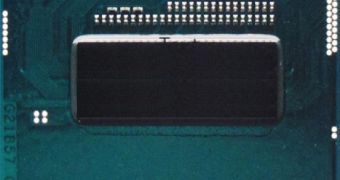Intel’s next-generation architecture will not be a huge performance jump in x86 performance, but the company is focusing on the graphics performance where it has a huge handicap when compared with its rival, Texan company AMD.
The semiconductor giant apparently has decided to strongly attack the low-end graphics market, as Haswell’s impressive GT3 integrated graphics processing unit (iGPU) will be the company’s second huge leap in 3D performance.
On the server side, Intel has actually managed to offer an interesting GPU compute alternative, but the Xeon Phi is completely inferior to AMD’s GCN in power consumption and any kind of performance measurement criteria, as we uncovered here.
On the desktop and mobile side, Intel clearly sees AMD’s Llano, Brazos and Trinity success, that has enabled the small CPU and GPU designer to capture 43% of the desktop market and a good slice of the mobile sector.
Intel’s Haswell is actually not going as much for x86 performance as it is going for AMD’s “good enough” mark while taking care to have decent graphics capabilities with acceptable or impressively low power consumption.
Word in the hardware world is that Intel’s GT3 iGPU will have an impressively high number of shaders, but the company will actually not clock them at such high frequencies as the ones inside Ivy Bridge’s HD4000 iGPU.
Haswell, just like Ivy Bridge, will still be built in 22nm manufacturing technology, so it would have been truly amazing if Intel managed to clock a chip more than double in size at the same 1.3 GHz frequency.
Some say that this is a design decision as, Intel is gunning for low power consumption and cares less about performance as it already has the x86 performance crown, and AMD’s Vishera will not challenge that.
The thing is that Intel is free to go for a 700 MHz or 800 MHz GT3 implementation in the mobile sector and a 1300 MHz iGPU version for the desktop market.
In the end, if such a high clocked graphics chip will make it to shelves, that’s proof enough that it was a design decision.

 14 DAY TRIAL //
14 DAY TRIAL //